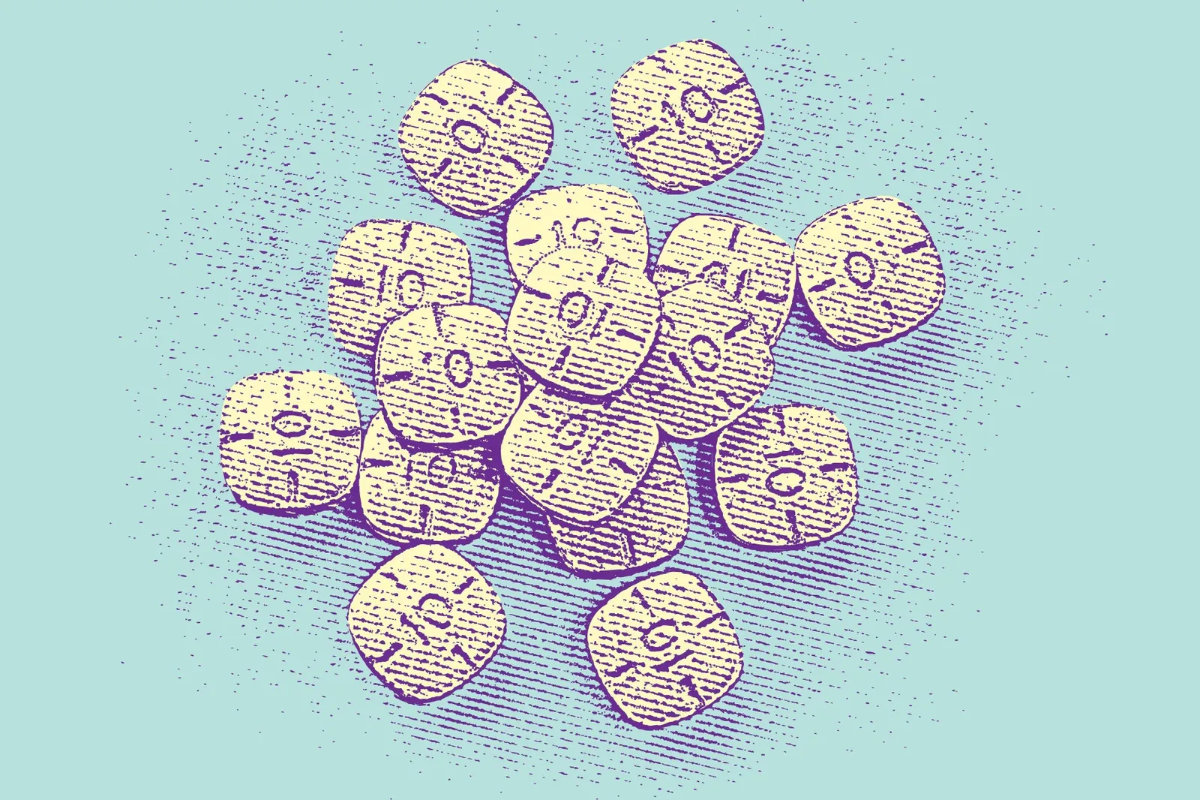Modafinil: A Strong Stimulant or a Milder Alternative to Adderall?
Modafinil and Adderall are often compared for their ability to improve wakefulness and focus. Adderall, a powerful stimulant, is primarily prescribed for ADHD and narcolepsy, while Modafinil, a wakefulness-promoting agent, is approved for sleep disorders. Despite these distinctions, both are used off-label as cognitive enhancers, leading to debates about their stimulant effects, safety, and risks.
Understanding their differences in mechanisms of action, abuse potential, side effects, and off-label uses provides clarity. This comparison sheds light on whether Modafinil should be considered a “strong stimulant” or a milder, more targeted alternative.
What Defines a Strong Stimulant?
Central nervous system (CNS) stimulants increase alertness, attention, and energy. They do this primarily by interacting with neurotransmitters like dopamine and norepinephrine in the brain, resulting in heightened focus and energy. These characteristics make stimulants suitable for treating conditions like ADHD and narcolepsy, though they can also carry risks such as dependency and abuse.
When assessing a stimulant’s “strength,” we consider three main factors:
- Dopamine Interaction: Drugs with a significant impact on dopamine pathways often have a higher potential for abuse and a more intense stimulant effect.
- Abuse Potential: Substances with strong stimulant properties are more likely to be misused, especially as cognitive enhancers.
- Side Effects: Strong stimulants often have more pronounced side effects, including increased heart rate, anxiety, and dependency risks.
Adderall, a well-known stimulant combining amphetamine salts, is classified as a Schedule II controlled substance, indicating a high risk of misuse and dependency. In contrast, Modafinil is classified as a Schedule IV substance, associated with fewer cases of misuse. This distinction in classification raises the question: Can Modafinil be considered a strong stimulant, or is it a milder option?
Mechanisms of Action – How Do Modafinil and Adderall Work?
Modafinil’s Mechanism of Action
Modafinil’s precise mechanism isn’t entirely understood, though it is believed to work primarily by blocking dopamine reuptake, which leads to an increase in dopamine levels in the brain. This action promotes wakefulness and focus, though without the “rush” typically associated with traditional stimulants. Modafinil also interacts with other neurotransmitters, including glutamate (which promotes alertness) and gamma-aminobutyric acid (GABA), which helps to reduce drowsiness.
Due to its effects across multiple neurotransmitter systems, Modafinil is often referred to as an “atypical” stimulant. Unlike traditional stimulants, Modafinil does not appear to trigger dopamine pathways as intensely, which may explain its milder stimulant effect and reduced potential for misuse.
Adderall’s Mechanism of Action
Adderall combines amphetamine and dextroamphetamine to increase dopamine and norepinephrine levels by blocking reuptake and releasing stored neurotransmitters. This dual action results in a potent boost in alertness, energy, and focus, making Adderall one of the more powerful stimulants prescribed today.
The effects of Adderall are often more intense than those of Modafinil due to its broader impact on dopamine pathways. This intensity contributes to Adderall’s classification as a “strong stimulant,” popular among individuals seeking enhanced cognitive performance in both medical and non-medical settings.
Key Differences in Mechanisms
While both Modafinil and Adderall influence dopamine, Modafinil’s impact is more selective, whereas Adderall stimulates a wider range of neurotransmitters with a stronger effect. This difference in mechanisms is a primary reason why Adderall is classified as a Schedule II substance and Modafinil as a Schedule IV, reinforcing Modafinil’s position as a milder stimulant.
Abuse Potential – Which Drug Is More Likely to Be Abused?
Modafinil’s Abuse Potential
Modafinil’s classification as a Schedule IV controlled substance suggests a relatively low risk of misuse and dependency compared to Schedule II drugs like Adderall. Most cases of Modafinil misuse are associated with its off-label use as a cognitive enhancer rather than for recreational purposes. Research and user experiences suggest that Modafinil has a low potential for abuse, with few documented cases of dependency or tolerance. If withdrawal symptoms do occur, they tend to be mild and primarily emotional, such as feelings of apathy or reduced motivation.
Modafinil’s lower abuse potential may be due to its unique effects on dopamine pathways. While it promotes wakefulness and alertness, it doesn’t produce the euphoric “high” associated with more powerful stimulants. This characteristic reduces the likelihood of recreational misuse.
Adderall’s Abuse Potential
Adderall, a Schedule II controlled substance, has a significantly higher potential for misuse than Modafinil. Its strong stimulant effects can lead to both physical and psychological dependency, especially with prolonged or high-dose use. The potential for Adderall misuse stems from its ability to produce a strong dopamine release, resulting in feelings of euphoria and enhanced focus, which some users seek for non-medical purposes.
Misuse of Adderall is particularly prevalent among students and professionals looking to boost cognitive performance. However, repeated misuse can lead to tolerance (requiring higher doses to achieve the same effects) and withdrawal symptoms, such as fatigue, depression, and sleep disturbances.
Comparing Abuse Risks
While both Modafinil and Adderall carry the potential for misuse, the risk is significantly higher with Adderall. Modafinil’s milder stimulant profile and less intense dopamine effect make it less appealing for recreational use and reduce its dependency risk.
Side Effects and Risks – Modafinil vs. Adderall
Modafinil’s Side Effects
Modafinil is generally well-tolerated, with most side effects being mild. Commonly reported side effects include headaches, nausea, increased heart rate, and insomnia. Less common but more serious side effects may include allergic reactions and rare skin conditions like Stevens-Johnson Syndrome (SJS). Modafinil also interacts with hormonal contraceptives, potentially reducing their effectiveness.
Although Modafinil does have stimulant effects, its side-effect profile is relatively mild compared to stronger stimulants. For instance, psychological effects such as anxiety or irritability are less common, making Modafinil a more suitable choice for individuals needing cognitive support with fewer risks.
Adderall’s Side Effects
Adderall’s side effects tend to be more pronounced due to its stronger stimulant action. Common side effects include dry mouth, loss of appetite, insomnia, and increased blood pressure. Some users may experience nervousness, anxiety, and in severe cases, psychotic symptoms such as paranoia or hallucinations. Adderall is also linked to higher risks of cardiovascular complications, which can be concerning for individuals with pre-existing heart conditions.
Adderall’s side effect profile underscores the need for close monitoring, particularly for long-term use, as it poses a higher risk of dependency and more intense withdrawal symptoms upon discontinuation.
Summary of Side Effects and Risks
While both drugs have side effects, those associated with Adderall are typically more severe and frequent. Modafinil’s milder side effect profile contributes to its reputation as a safer alternative for those who want to avoid the risks of stronger stimulants.
Off-Label Uses and Effectiveness in Non-Medical Settings
Off-Label Uses of Modafinil
While Modafinil is primarily approved to treat specific sleep disorders—such as narcolepsy, obstructive sleep apnea, and shift work disorder—it is also prescribed off-label for a range of other conditions. In some cases, physicians recommend Modafinil for patients experiencing chronic fatigue due to neurological conditions, such as multiple sclerosis, Parkinson’s disease, or even cancer-related fatigue. Additionally, some individuals with ADHD find that Modafinil helps manage their symptoms, though it is not officially approved for ADHD treatment.
In non-medical settings, Modafinil has become a popular cognitive enhancer, particularly among students, professionals, and military personnel. The U.S. military, for instance, has adopted Modafinil as a replacement for traditional stimulants like dexamphetamine in sleep-deprived scenarios, where maintaining alertness and cognitive performance is crucial.
Off-Label Uses of Adderall
Adderall’s potent stimulant effects have made it a popular choice off-label for cognitive enhancement, weight management, and boosting energy levels in demanding environments. For individuals seeking quick improvements in focus or energy, Adderall is often attractive. However, its strong stimulant profile and higher abuse potential pose significant risks, especially when used without medical supervision.
Off-label uses of Adderall are common among students and young professionals aiming to improve academic or job performance. The drug’s stimulant properties help to sustain attention and alertness, but it’s also associated with dependency risks, which highlight the need for caution in non-medical settings.
Effectiveness of Modafinil and Adderall for Cognitive Enhancement
Studies exploring Modafinil and Adderall for cognitive enhancement provide varied results. Research on Modafinil indicates improvements in attention, decision-making, and planning abilities, especially under conditions of sleep deprivation. However, Modafinil has not substantially enhanced working memory or complex problem-solving tasks. It primarily enhances wakefulness and alertness, rather than increasing “intelligence” or cognitive capability.
Adderall’s stimulant effects can enhance short-term attention and focus, though the benefits may diminish with repeated use, particularly among individuals without ADHD. While Adderall can provide initial cognitive gains, studies suggest that long-term reliance on the drug for cognitive enhancement may lead to diminishing returns due to tolerance, dependency, and withdrawal risks.
Does Modafinil Qualify as a Strong Stimulant?
Recap of Modafinil’s Stimulant Properties
Modafinil shares some characteristics with traditional stimulants, such as promoting wakefulness and enhancing alertness, but it does so through a controlled and selective mechanism. Unlike Adderall, which exerts a strong influence on dopamine and norepinephrine levels, Modafinil selectively influences dopamine without causing the intense rush or “high” that’s typical of other stimulants. This unique action gives Modafinil stimulant-like properties but with fewer abuse risks and a milder overall effect.
Modafinil’s primary classification as a “wakefulness-promoting agent” rather than a traditional stimulant reflects its distinct approach to enhancing alertness. It avoids the intense stimulation associated with drugs like Adderall, and its selective interaction with dopamine results in a moderate stimulant effect without strong euphoria or dependency risks.
Why Modafinil is Considered a Milder Alternative
Due to its selective dopamine effects and limited impact on norepinephrine, Modafinil is widely viewed as a “milder alternative” to traditional stimulants. It offers cognitive and wakefulness benefits without the pronounced stimulant response or dependency risks associated with Adderall. Additionally, Modafinil’s side effect profile is relatively mild, making it a safer choice for individuals needing sustained alertness without the intense boost typically provided by stronger stimulants.
From a regulatory perspective, Modafinil’s Schedule IV classification reflects its lower abuse potential, in contrast to Adderall’s Schedule II status. This difference, alongside Modafinil’s proven efficacy in managing fatigue-related conditions, supports its reputation as a milder stimulant in clinical and non-clinical applications.
Conclusion
In comparing Modafinil and Adderall, we observe two distinct stimulant profiles, each with specific benefits and risks. Adderall stands out as a strong stimulant, delivering notable improvements in wakefulness and focus but with a higher likelihood of abuse and side effects. Modafinil, by contrast, provides a selective and milder stimulant effect, making it a safer option for individuals seeking enhanced alertness without the dependency risks of stronger stimulants.
The choice between Modafinil and Adderall should ultimately be based on personal needs, potential side effects, and guidance from a healthcare provider. For those in need of cognitive and wakefulness support with fewer risks, Modafinil’s atypical stimulant profile offers a balanced combination of effectiveness and safety, establishing it as a reliable and milder alternative to Adderall.








